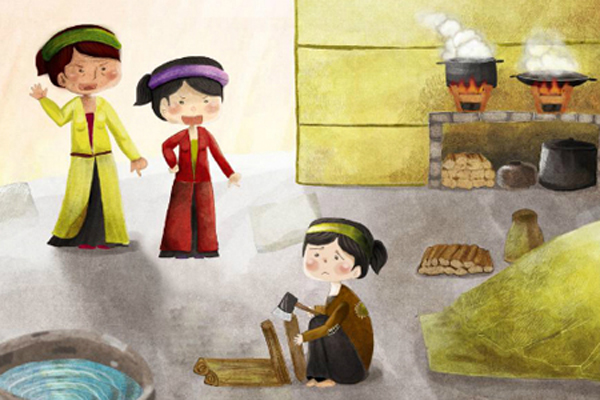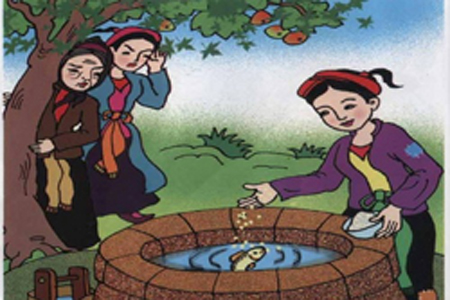Of all my books in Vietnamese, the fondest memory is of a translation of Grimm’s Tales from German. I recall misty dawn of winter 1972 when shops closed at about 8 in the morning in anticipation of American air raids. Long queues were formed by young children in front of a book shop on Theatre Avenue waiting to buy a new edition of Grimm’s Tales before rejoining their fathers who were waiting along the curb to take them on their bicycles to evacu action centers in the countryside.
I asked the children which Tale they preferred, and many melttioned Asheitputtel, perhaps because the theme of the story is the same as that of the popular Vietnamese tale "Tam Cam".
Here is a brief summary of the story of Tam, the Vietnamese Cinderella. Having lost her mother, then her father, soon after she is ill-treated by her step-mother, who reserves all her favors for Cam, her own daughter. One day Cam steals all of Tam's catch of rice field crabs and presents it to her mother as her own, for which she is rewarded a crimson bodice. Buddha appears to Tam and comforts her by giving her a small fish. The spiteful Cam kills the fish. Buddha appears to Tam to put the fish's bones in a ceramic vessel and bury it under her bed. The day comes when a festival is held in the capital. Cam and her mother go to attend the festivities, which take place in the presence of the young heir to the throne.

Tam wishes to go too, but her step-mother says she can’t do so before completing a task assigned to her, to separate husked from unhusked paddy. Buddha sends a flock of sparrows, which finish the job in a jiffy. Then he tells Tam to extract the ceramic jar from under her bed, and there appear before her wonder-struck eyes a set of beautiful clothes and a spirit-horse. Now she can go to the festival where she enjoys herself enormously. But then she is so upset by the approach of the admiring young prince that she leaves the place in such a hurry that she loses one of her slippers. The prince is so impressed by her beauty and charm that he orders his mandarins to find the owner of the slipper so he can make her his bride. Tam thus becomes a queen.
Alas, by means of foul play, her step-mother manages to get rid of her and substitute her daughter Cam for her. In subsequent episodes, Tam goes through a series of incarnations taking successively, the form of a songbird, a peach tree, a weaving loom, and a calamander fruit, before returning to this world in human form and living the rest of her life with her royal husband in perfect bliss.
The Vietnamese Tam offers clear similarities with the Cinderellas of other peoples. Since Frazer, Jung, and Levi-Strauss we have discovered archetypes and the collective unconscious. The same motifs can be found in all cultures, for individual consciousness is born of universal consciousness common to all societies. Naturally the motif "Cinderella" is marked by different physical and social frameworks. The story as told by Perrault reflects the pomp of the time of the Sun King while the Grimm tale abounds in sentimental elements dear to German romantic sensibility, which draws it closer to the Vietnamese version.
In Vietnam, the Viet ethnic majority shares the Cinderella theme with other groups in the country; Thai, Meo, Muong, Lolo, and the Cham, and elsewhere in Southeast Asia; Lao, Burmese, and Thai.
The story of Tam and Cam has distinctive elements of Vietnamese local color: the sacred areca palm, the betel leaf shaped like the wings of a phoenix, the crimson bodice, the village spring festival, the deity But (Buddha) protecting disinherited children, the fragrant fruit of the calamander and the hemp-rope hammock strung between two trees. Popular imagination sees an image of Tam in Queen Y Lan, a historical personage who is worshipped in several temples of Bac Ninh province.



